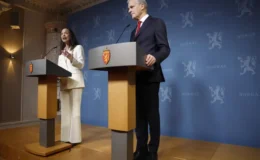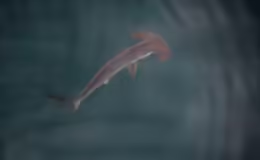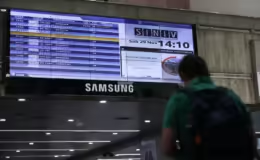This is just a cool story and PIC.
- By : James Bryson
- Category : Environmental, World Events

The European Solar Orbiter mission, which aims to study the Sun, filmed the transition between our star’s lower atmosphere and the outer corona, with images showing the glowing gas forming lace-like patterns, called coronal moss.
The European Space Agency (ESA) has published on its website those images, which were taken by the probe in September last year when it was approximately a third of the distance from the Earth to the Sun and was heading for its closest approach of 43 million kilometers.
The Sun up close has the appearance of an “otherworldly, constantly changing landscape” and Solar Orbiter recorded the transition between the Sun’s lower atmosphere and the much hotter outer corona.
In the images, hair-shaped structures can be seen, which are formed by charged gas (plasma), which follows the magnetic field lines that emerge from the interior of the Sun.
The brightest regions are around a million degrees, while the coldest material appears dark as it absorbs the radiation.
The Solar Orbiter footage shows an intriguing feature, which is the glowing gas that forms delicate lace-like patterns across the Sun, so-called coronal moss.
Such moss usually appears around the base of large coronal loops that are too hot or too faint to be seen with the chosen instrument settings.
Likewise, spirals of gas, known as spicules, can be seen on the solar horizon, rising from the chromosphere, one of the layers of the Sun’s atmosphere, and can reach 10,000 kilometers in height.
The European probe took the now released video on the same day that NASA’s Parker Sola Probe mission, which is not equipped with cameras and measures particles and the magnetic field in the solar corona and in the solar wind, passed to only 7, 26 million kilometers from the star’s surface.
This was a perfect opportunity for the two missions to come together, as the Solar Orbiter’s remote sensing instruments observed the source region of the solar wind that would later pass the Parker Solar Probe, ESA said.



No Comments